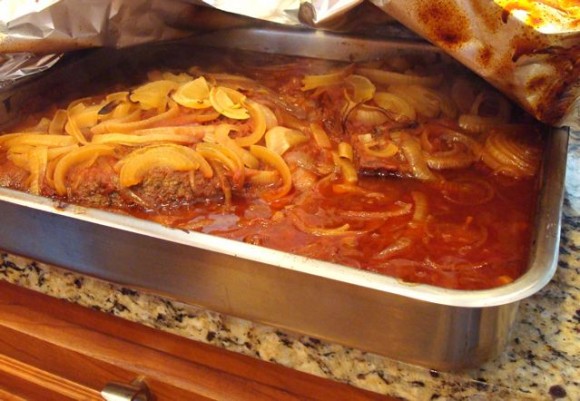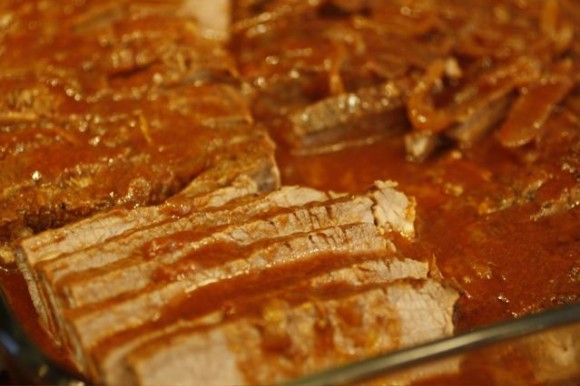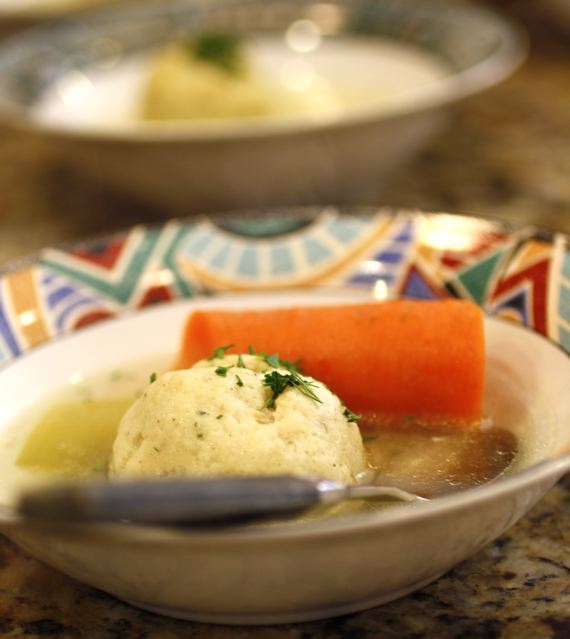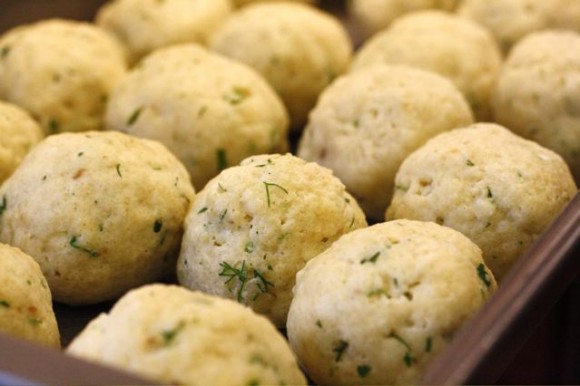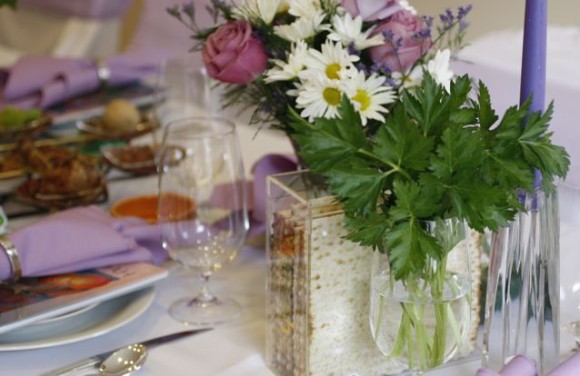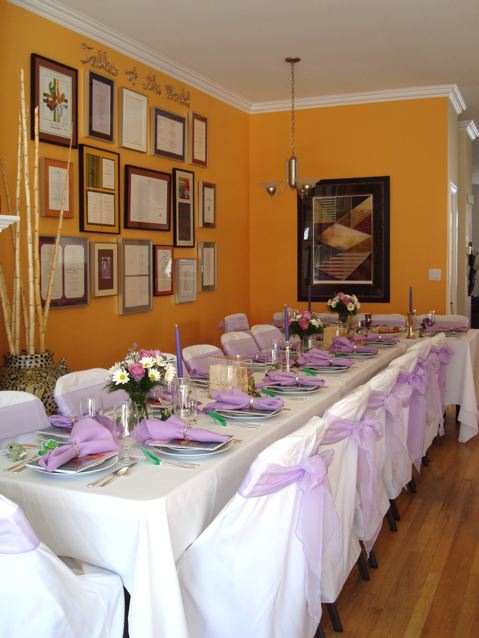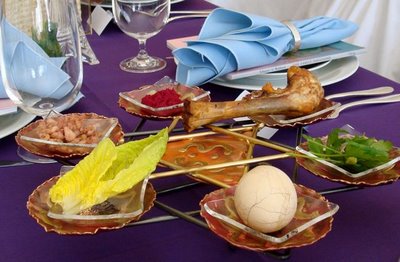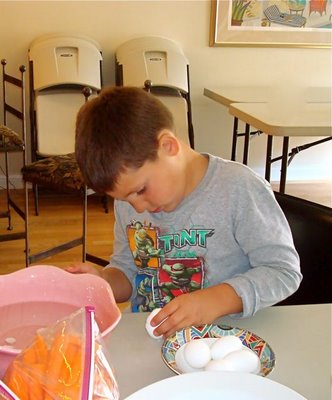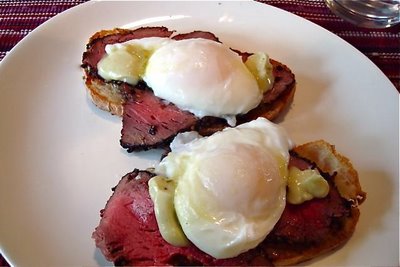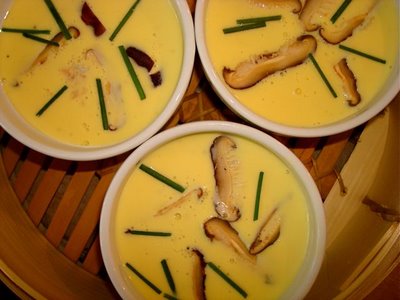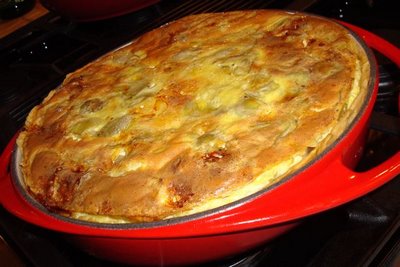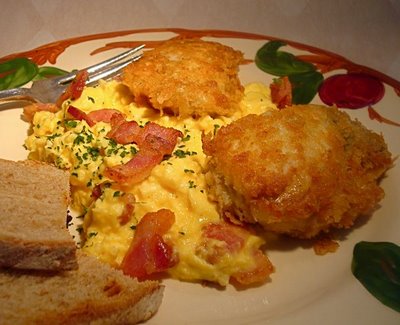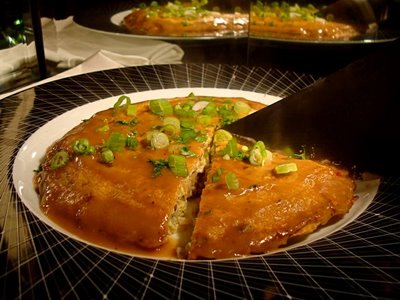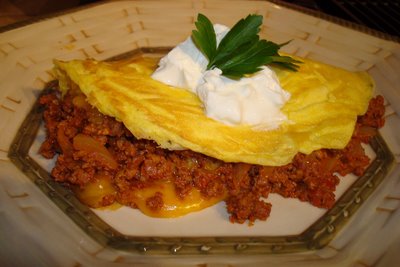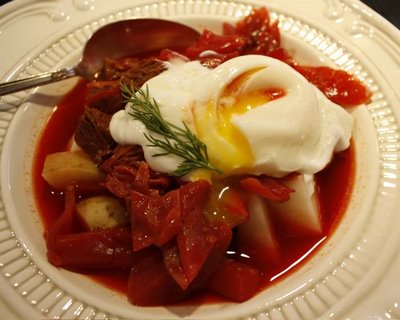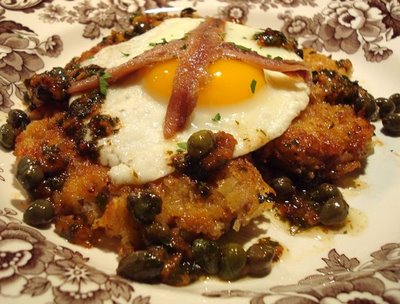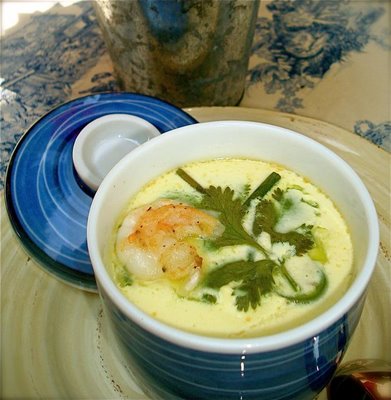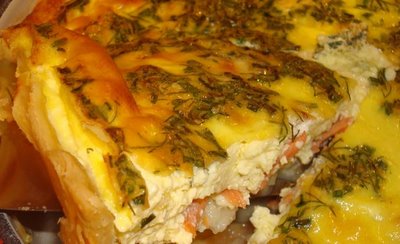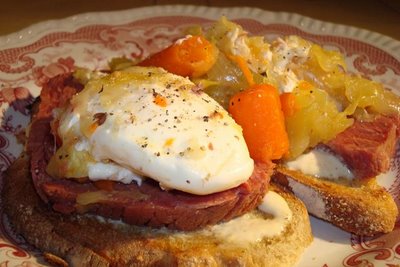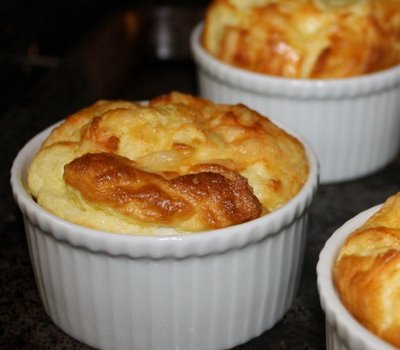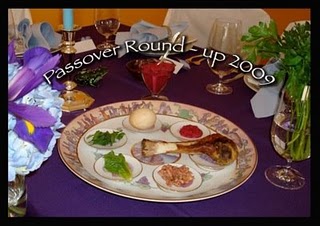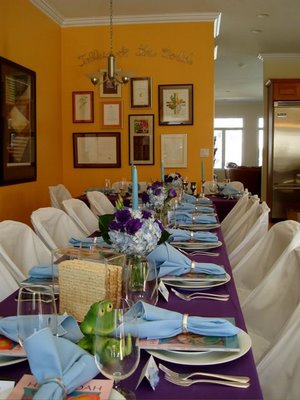
The tables are set early in the day.
Passover begins after sundown.
And there is much to prepare!
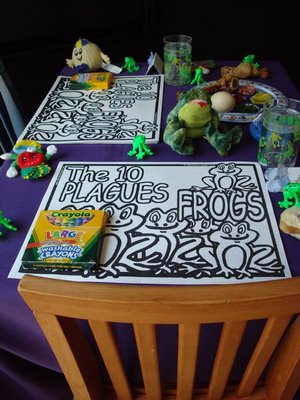
The kids have their own table. Stone is six years old and Jett is four.
They have their own Seder plate, just like the adults.
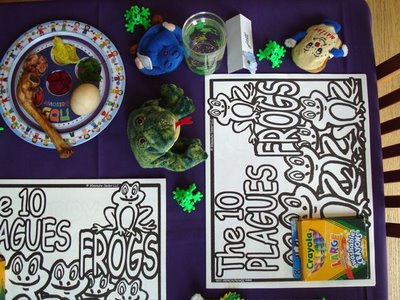
Passover Seder Plate contains symbolic foods having special significance in retelling the Passover story: z’roa (roasted shankbone), charoset, chazeret (romaine lettuce), karpas (parsley), beitzah (roasted egg), maror (horseradish).
What is the significance of all these frogs?
We have new people at our Seder every year, and they ask, what can I bring? Since the food is already planned, we say, please bring a frog. Our frog community has grown over the years.It is very important that children are involved in the Seder. The frogs, the place mats for coloring, helping with the washing of the hands, and ultimately the hunting for the afikomen help to keep even very young kids engaged and excited about Passover. My nephews are two energetic little boys who are well-behaved and respectful throughout the evening. I am a proud Aunt, can you tell?

My favorite, the Chef Frog (bottom left). Is he holding a brisket?
When Pharaoh refused to set the Israelites free, God punished the Egyptians with Ten Plagues. Frogs are one of the Ten Plagues.
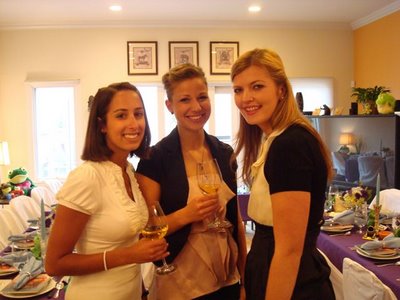
We recognize guests who are attending their first Seder. Lena, Kim and Viktoria are from Germany and are working in Chicago for a year as au pairs.
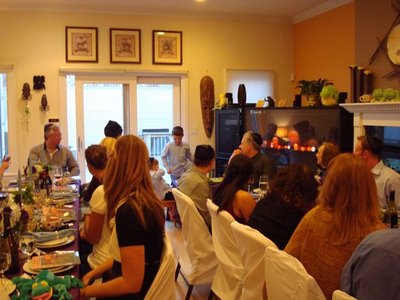
Everyone is seated. There is Stone at the kids table by the window. Everyone gives him their attention as he welcomed everyone to our Seder with his own poem.
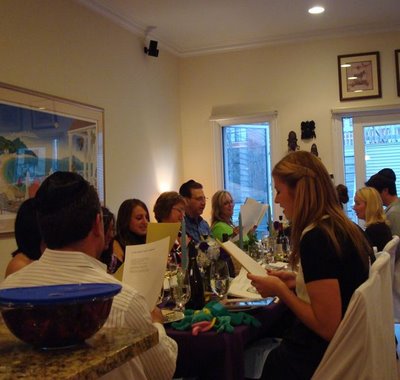
My brother, Don, is the leader. Everyone participates. We read from the haggadah. We recite the blessings. We tell the story of the Exodus from Egypt. We sing. We drink. We eat. We laugh. We get teary-eyed. Our story is being retold all over the world on this day.
Seder means order. Here is the order of the Seder:
- Kaddesh – Saying a blessing over the first cup of wine in honor of the holiday.
- Urechatz – Washing the hands, no blessing is said, prepare to eat karpas.
- Karpas – Eating parsley dipped in salt water, representing the tears of our ancestors.
- Yachatz – The middle of the three matzohs on the table is broken, the larger piece becomes the afikomen.
- Maggid – The story of the Exodus from Egypt is retold. It starts with asking of the Four Questions by the youngest at the table.
- Rachtzah – Hands are washed for the second time with a blessing, prepare to eat the matzoh.
- Motzi – A blessing for bread or grain products is recited over the matzoh.
- Matzah – Blessing specific to matzoh is recited and then matzoh is eaten.
- Maror – Blessing is recited over a bitter vegetable such as horseradish, symbolizing the bitterness of slavery.
- Korekh – Another set of bitter herbs known as Chazeret is eaten as the sandwich to replace the paschal offering. We make a matzoh sandwich with maror and charoset.
- Shulchan Orech – A festive meal is eaten.
- Tzafun – Piece of Matzoh hidden for the children to find and is eaten as the ‘dessert’ or the last food of the meal.
- Barech -Grace is recited over the third cup of wine and then it is drunk. The fourth cup is poured along with the cup set aside for the Prophet Elijah. The door is opened to invite him in.
- Hallel – Several psalms are recited followed by a blessing over the last cup of wine.
- Nirtzah – A wish is made that Jews may celebrate next Pesach in Jerusalem or that the Messiah may come again next year.
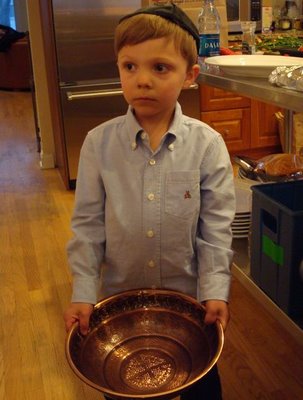
Jett is ready to help with The First Washing of the Hands.
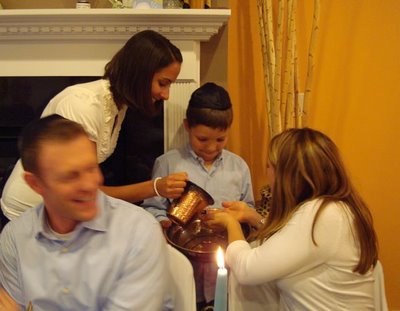
Lena and Stone assist with the washing of the hands, here, with Cousin Vicki. Vicki had been the youngest in our family until Stone and Jett were born. The youngest is the one to ask the Four Questions. This year, for the first time in almost three decades, Vicki did not ask the Four Questions. Stone did. (Maybe you remember Cousin Vicki from my posting about her beautiful wedding to Jonah in the Sonoma wine country last Fall
here).
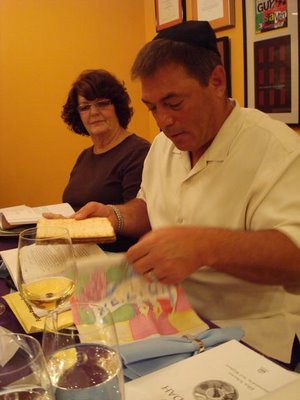
We eat matzoh on Passover to remind us that the Israelites left Egypt in such haste, they could not wait for the bread to rise. Additionally, matzoh is the “bread of affliction” – the food of slavery, it reminds us to be humble and to appreciate our freedoms. Don places 3 matzohs in a special cloth. The middle matzoh will be broken in half, the larger piece placed in a little bag and hidden. The kids hunt for this piece of matzoh called the afikomen after dinner and receive a cash reward for “returning” the afikomen to the adults.
Stone asks in English and Hebrew:
Why is this night different from all other nights?
Mah nishtanah halyla hazeh mikol halaylot
1) On all nights we need not dip even once, on this night we do so twice.
2) On all nights we eat chametz or matzoh, and on this night only matzoh.
3) On all nights we eat any kind of vegetables, and on this night maror.
4) On all nights we eat sitting upright or reclining, and on this night we all recline.
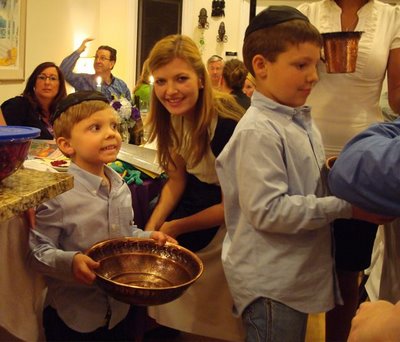
A second washing of the hands, this time with a blessing, in preparation for eating the matzoh.
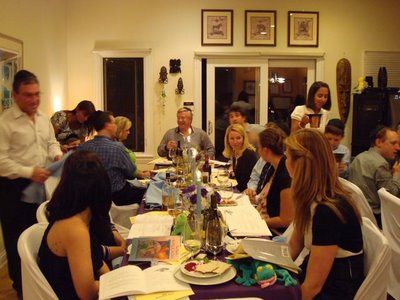
As Lena and Stone help with the hand washing at one table, Kristy and Jett assist the other table. One of the objectives of the Seder is to retell our story and teach the next generation about the rituals, symbols, and meaning of the holiday. Next, we recite a blessing for matzoh and maror, eat a Hillel sandwich of charoset and maror, then serve the meal.
Please stop by on April 17 to see the food from this Seder and others!
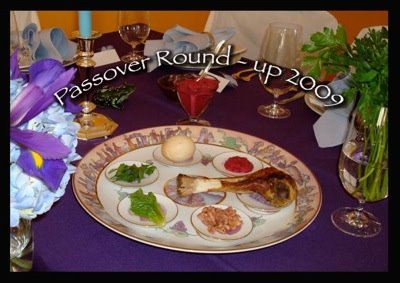
Later that night:
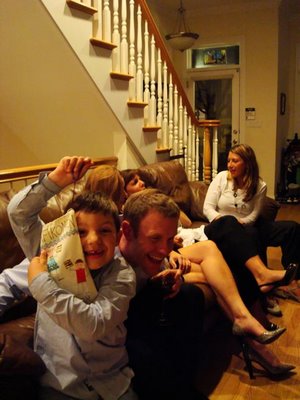
“I found the Afikomen!”

